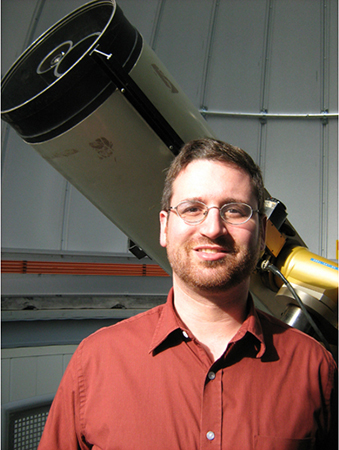
Gregory R. Sivakoff
(Board member: 2016-2019)
Astronomy, Ph.D.
"'Space is big. You ought to find your place in it.' Taking my Dad's advice to heart, I began researching black holes as an undergraduate in 1998, and have since earned my PhD in astronomy (2006). In 2011, I became an Assistant Professor at the University of Alberta (Canada). Here, I teach physics and astronomy, perform research, and heavily engage in public outreach. I am a member of the American Astronomical Society, Canadian Astronomical Society, Royal Astronomical Society of Canada, and of course the AAVSO.
I study black holes, neutron stars, and white dwarfs, focusing on close binaries with these objects (X-ray binaries and cataclysmic variables). I observe these highly variable objects across most of the electromagnetic spectrum, using telescopes from all over (and above) the world. My strongest expertise is at X-ray and radio wavelengths.
I have worked with the AAVSO on observing campaigns since 2010 (e.g., working on the cataclysmic variable SS Cygni and the X-ray binary V404 Cygni). While I started as a behind-the-scenes researcher collecting the AAVSO data, I now take it upon myself to interact closely with AAVSO members involved in a campaign. I fully believe in the importance of citizen scientists and “professional” astronomers working together, as each community offers their own unique, and complementary set of expertise. This cooperation was critical when AAVSO members helped my team and me determine the distance to SS Cygni.
I am honored to be considered as a potential member of the AAVSO council and it would be a privilege to serve in that position. As a council member, I believe that I can apply the techniques I have learned through my multiple AAVSO campaigns (and in organizing the worldwide response of "professional" astronomers) to promote stronger interaction between professional and citizen scientists. This is an especially critical time for such interaction as “professional” astronomers across the electromagnetic spectrum are reawakening to the power (and fun!) of time-domain astronomy."

